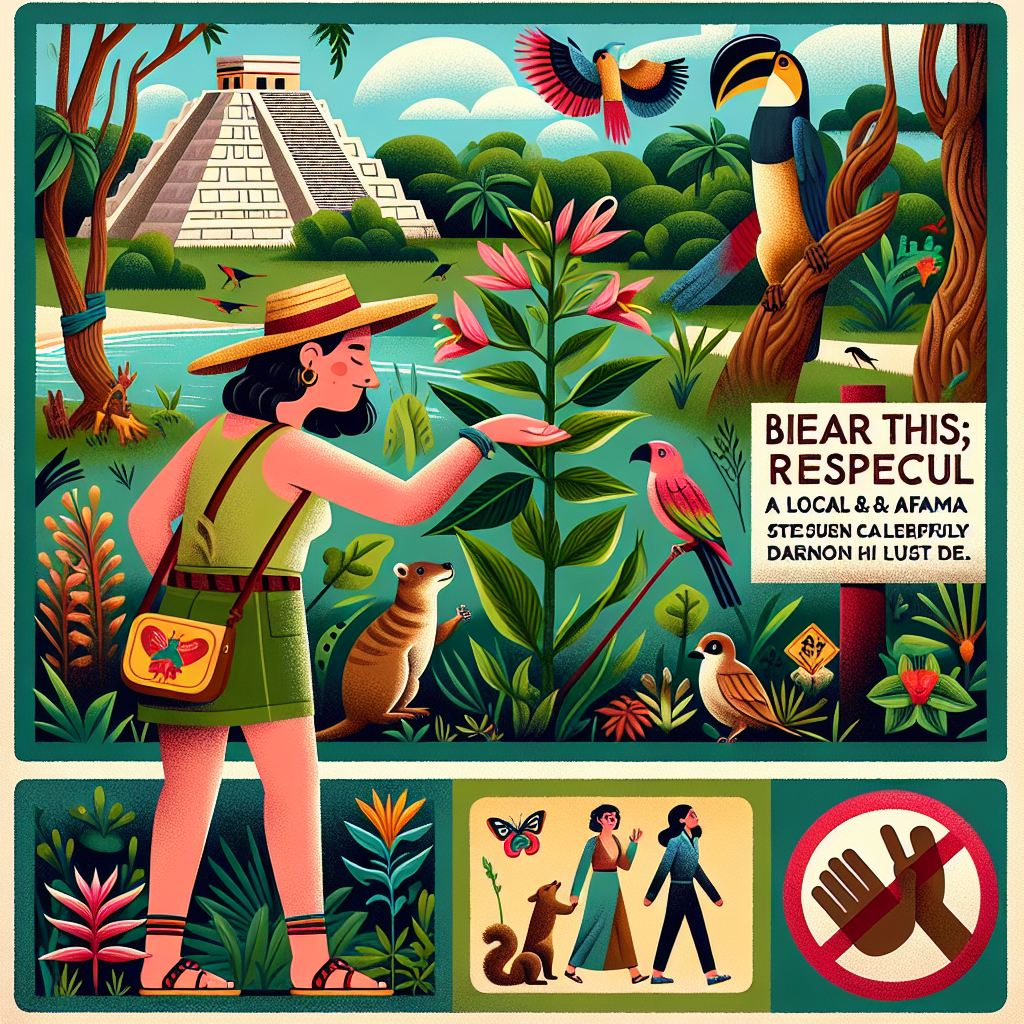Understanding the Importance of Local Flora and Fauna
When visiting Tulum, Mexico, it’s essential to appreciate the vast diversity of local flora and fauna. The region is home to unique ecosystems, which provide habitats for various species, including endangered plants and animals. Understanding the significance of these natural resources is crucial for any visitor aiming to engage with and respect the local environment.
Guidelines for Responsible Sightseeing
-
Stay on Designated Paths
Tulum’s natural reserves and archaeological sites are filled with delicate ecosystems. To protect these habitats, always stick to marked trails. This practice minimizes potential damage to native vegetation and prevents soil erosion, which can result from off-path trampling. -
Observe Wildlife from a Distance
To keep both yourself and the wildlife safe, maintain a respectful distance from all animals. Observing them in their natural habitat without disturbing their behaviors is not only respectful but also enhances the experience by allowing for authentic wildlife observation. -
Do Not Feed Wildlife
While it may be tempting to feed the local animals, this can harm their natural foraging instincts and lead to dependence on human-provided food. Feeding wildlife can also disrupt their natural behaviors and make them more susceptible to dangerous human interactions. - Leave No Trace
Adhere to the Leave No Trace principles during your visit. This includes collecting any rubbish you may generate, even if it’s not yours. Always dispose of waste responsibly and make use of designated bins to keep the environment clean.
Flora: Respecting Plant Life
-
Avoid Picking Plants or Flowers
Removing any flora, including leaves and flowers, can disrupt local ecosystems. Many plants are vital for the sustainability of animal life and overall environmental health. To fully appreciate their beauty, take photographs instead. - Educate Yourself on Endangered Species
Before your trip, familiarize yourself with local plants, especially those identified as endangered. Understanding their ecological roles and the pressing threats they face can inspire you to be a more conscientious traveler.
Fauna: Interacting with Wildlife
-
Responsible Snorkeling and Diving
Tulum is famous for its cenotes and coral reefs. When snorkeling or diving, ensure you do not touch or stand on coral. Coral reefs are fragile ecosystems that can take decades to recover from injury. Additionally, avoid using sunscreen that contains harmful chemicals, as these can damage marine life. - Engage in Eco-Tours
Seek out tour companies dedicated to eco-friendly practices. These operators are committed to minimizing ecological footprints and often provide educational information about local wildlife preservation efforts.
Supporting Local Conservation Efforts
-
Visit Conservation Centers
In Tulum, various organizations work to protect local species and habitats. Visiting these centers not only supports their mission through entry fees but also educates you on local conservation efforts, enhancing your overall experience. -
Purchase Sustainable Products
When shopping for souvenirs, choose items that are sustainably sourced or made from recycled materials. This supports local artisans and businesses focused on environmental conservation, reducing reliance on harmful production processes. - Participate in Local Clean-Up Events
If your schedule allows, join community efforts aimed at cleaning natural areas. Participating in beach clean-ups or reforestation activities provides hands-on support for preserving Tulum’s rich natural beauty.
Cultural Considerations in Tulum
-
Respect Local Customs and Practices
Understanding the cultural context surrounding interactions with nature is vital. Many local communities hold spiritual beliefs connected to the land and creatures. Educate yourself and act respectfully in their presence. - Support Local Indigenous Communities
Engage with local indigenous communities to better understand their relationship with nature. Support their artisans and cultural initiatives, fostering sustainable development while respecting their rich heritage.
Best Practices for Sustainable Travel
-
Choose Eco-Friendly Accommodations
Opt for hotels and lodgings that prioritize sustainability. Look for establishments with green certifications or those committed to minimizing their environmental impacts through renewable energy sources, water conservation practices, and waste management programs. -
Limit Water Usage
Water is a precious resource in Tulum, and evolving water use habits can help in conservation efforts. Simple practices such as shorter showers and reusing towels can significantly reduce water consumption during your stay. - Use Biodegradable Products
Bring biodegradable personal care products on your trip, such as soaps and shampoos. This reduces the amount of harmful chemicals entering the ecosystem and supports Tulum’s commitment to sustainability.
Conclusion: Practicing Respect in Nature
By following these guidelines, travelers can actively contribute to the conservation of Tulum’s unique flora and fauna. Each individual’s small actions combine to create a substantial positive impact, ensuring that Tulum remains a paradise for future generations to explore and cherish.







